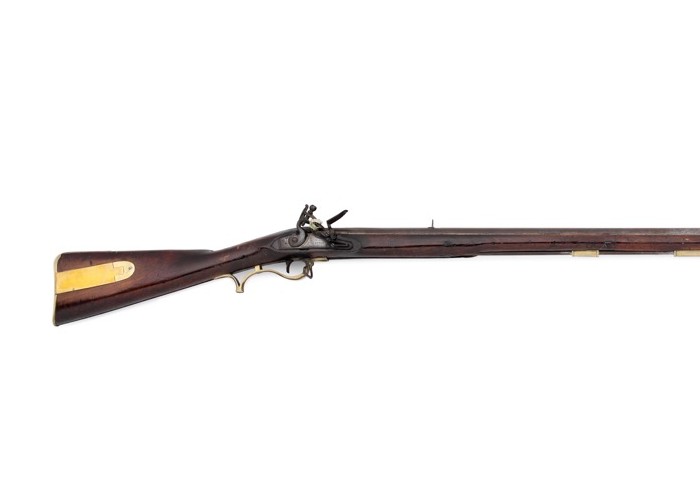Baker rifle & sword bayonet
This British rifle, named after its maker, Ezekial Baker, was one of the most advanced weapons in the world at the time of the Battle of Waterloo. It was much more accurate than the guns used by most soldiers, but also harder and more expensive to make.
By the mid 1700s most Continental European armies incorporated bodies of troops armed with rifles instead of the usual muskets. A rifle differs from a musket in that the inside of its barrel is “rifled” with a spiral of grooves that makes the bullet spin when it is fired , giving it ballistic stability and making the shot capable of greater accuracy at longer ranges.
In 1809, as the British retreated toward La Corunna in Spain, Rifleman Thomas Plunkett shot the French General Colbert at a range greater then 300 metres, far longer than was possible with a musket. Plunkett was wounded in the head at Waterloo and died in 1851.
Soldiers armed with rifles were able to focus on specific targets, which tended to be enemy officers, cannon crew men and the horses used to move the cannon. The idea was that if all their officers were killed the ordinary soldiers would have nobody to tell them what to do and would probably run away. If all the gunners around a cannon were killed it could not be fired and if all the horses in the gun team were killed the cannon could not be moved.
There were a small number of British troops armed with rifles in the Seven Years War (1756 -1763) and the American Revolutionary War ( 1775 – 1783). Whilst they were very effective, it was not until the 25th August 1800 that the 95th Regiment (Rifles) was established. The riflemen were dressed in green uniforms (rather than red or blue) and their equipment was black leather rather than white leather dressed with pipeclay. This was designed to make them less easy to see on the battlefield. The green uniforms gave them the name “Grasshoppers” whilst the French called them “les coquins vertes” (the green rascals).
The Baker rifle was designed by the famous London gun maker, Ezekiel Baker. The rifles were available in two sizes; the same size as the Infantry musket and that of the Cavalry carbine. Their walnut stocks had little boxes with brass lids in their butts to hold tools and the greased leather patches that were wrapped around the bullets to make them grip the rifling.
Riflemen were also issued with a sword bayonet for close combat. The sword bayonet for a rifle was also longer than the bayonets used on muskets. These sword bayonets were not very robust and so riflemen rarely used them in close combat. Instead the soldiers tended to use them for odd jobs like cutting firewood.
-
Use this image
You can download and use the high resolution image for use in a non-profit environment such as a school or college, but please take note of the license type and rights holder information below
- Rights Holder: The Royal Green Jackets Museum. Photography Relic Imaging Ltd.
- License Type: Creative Commons
Find it here
This object is in the collection of Royal Green Jackets – Rifles Museum










